By Denis Bright
The arrival of Kamala Harris as the running-mate to Joe Biden has energised this year’s US Presidential Campaign. As a fringe-benefit, the Biden-Harris team is challenging some of that old-time emphasis on corporate ideology and military intrigue which has been part of the Republican agenda since the Nixon era in the 1960s. As keynote speaker at the Virtual National Democratic Convention, former first lady Michelle Obama is kicking off a second week for momentum for the Biden-Harris team.
Progressive leaders worldwide should look at the excellence of Michelle Obama’s speech. Here are just a few extracts:
A president’s words have the power to move markets. They can start wars or broker peace. They can summon our better angels or awaken our worst instincts. You simply cannot fake your way through this job…
… Four years later, the state of this nation is very different. More than 150,000 people have died, and our economy is in shambles because of a virus that this president downplayed for too long. It has left millions of people jobless. Too many have lost their health care; too many are struggling to take care of basic necessities like food and rent; too many communities have been left in the lurch to grapple with whether and how to open our schools safely…
… So, let me be as honest and clear as I possibly can. Donald Trump is the wrong president for our country. He has had more than enough time to prove that he can do the job, but he is clearly in over his head. He cannot meet this moment. He simply cannot be who we need him to be for us. It is what it is…
Michelle Obama’s rhetorical excellence increases with this moment of self-criticism:
Now, Joe is not perfect. And he’d be the first to tell you that. But there is no perfect candidate, no perfect president. And his ability to learn and grow — we find in that the kind of humility and maturity that so many of us yearn for right now. Because Joe Biden has served this nation his entire life without ever losing sight of who he is; but more than that, he has never lost sight of who we are, all of us…
… So, it is up to us to add our voices and our votes to the course of history, echoing heroes like John Lewis who said, “When you see something that is not right, you must say something. You must do something.” That is the truest form of empathy: not just feeling, but doing; not just for ourselves or our kids, but for everyone, for all our kids.
And if we want to keep the possibility of progress alive in our time, if we want to be able to look our children in the eye after this election, we have got to reassert our place in American history. And we have got to do everything we can to elect my friend, Joe Biden, as the next president of the United States…
Future roadblocks may slow down this momentum of this political renewal across the US where only 55.7 per cent of registered voters answered the call to vote in 2016. However, political momentum for change is in the wind in both the US and across the countries in the US Global Alliance which are largely in the grasp of centre-right government with a profound loyalty to corporate ideology and commitment to peace through military strength above diplomatic initiatives which acknowledge profound changes in global political economy since the Fall of the Berlin Wall.
Latest electoral map graphics are based on a summary of the results of major US polling networks. Those which were too close to call have not been included in this national tally which should cover all 538 votes for the US Electoral College. At this stage, the Democrats would still win a majority of 270 without any of these additional states.
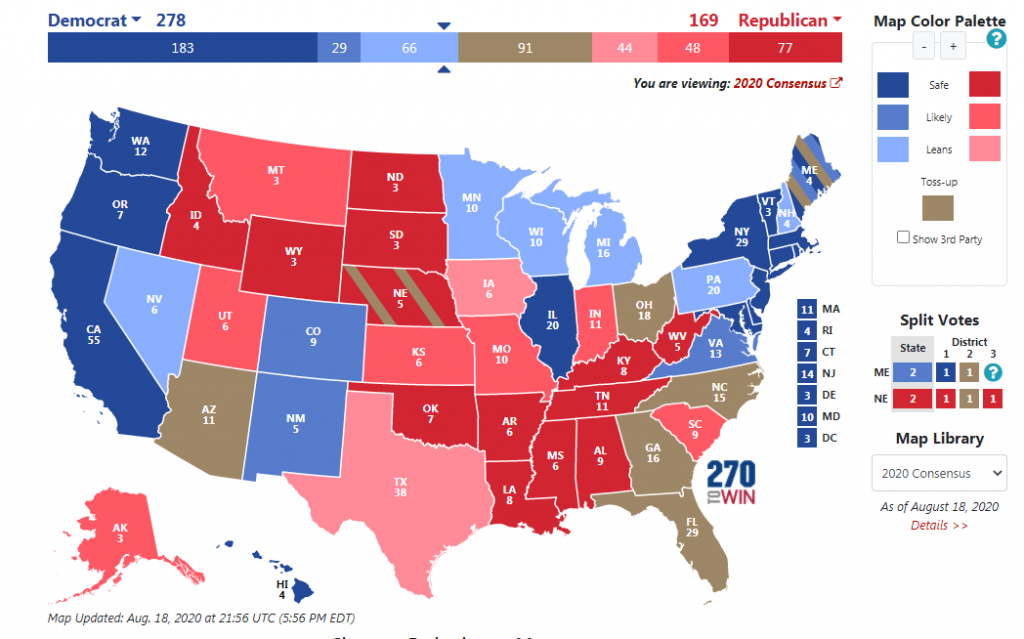
Map from 270towin.com
Even without 101 US Electoral College Votes from so-called Toss-up States, the Biden-Harris team is definitely headed in the right direction, but the situation changes every day. The vital state of Florida keeps moving in and out of the Democrat camp and now in the Toss-up category. The state of Ohio is also in this category. This is very relevant to this story-line as later sections of this article will show.
Expect future roadblocks to this initial momentum. Support from minor parties like the Greens and Libertarians gained enough support to deny victory to the Democrats in 2016 in a national electorate where only 55.7 per cent of registered constituents cast a ballot. Current polling has Florida leaning towards the Democrats.
Back in 2016, votes from the minor parties in Florida were enough to push the Republicans into the lead. There was a similar situation in five other swing states:
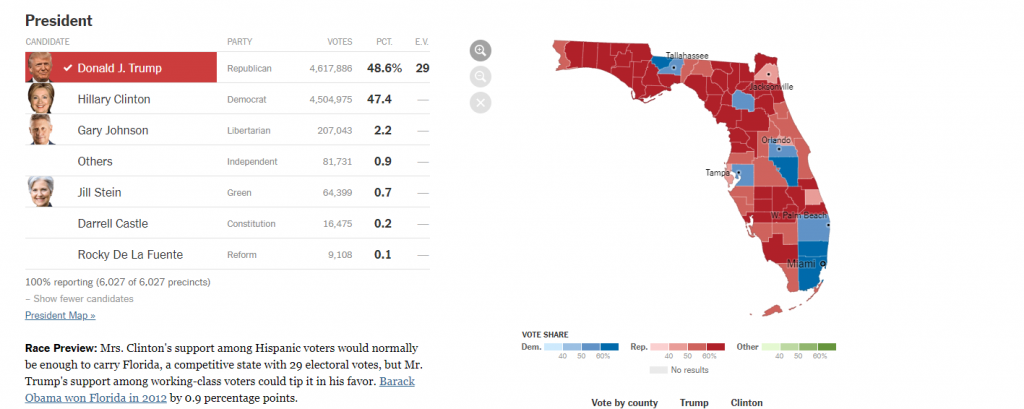
Image from New York Times, 13 August 2017
Another potential roadblock comes from the siege mentality of President Trump as some fellow-Republicans to break ranks with him on issues such as rigged elections (Criticism from Ohio Attorney General Dave Yost in the Cincinnati Enquirer 17 August 2020).
In the traditions of those crazy musical lyrics from Lily the Pink in 1968, literally anything could happen under the directives of an unstable global leader with a penchant for exotic medicinal remedies.
Critical probability theory adds new dimensions based on chance factors in the Toss-up states and a very unstable global community where the election outcomes have great significance.
Don Smith’s article on Ubiquity is a handy reference to assist in anticipating the Unexpected.

In this context, the best option for the Democrats is surely to talk up their emphasis that Blue Wave Road to ways out of the multi-faceted crises facing the USA. President Roosevelt (1932-45) made a similar break as Democrats gained control of the House of Representatives at the Mid-term elections in 1930 at the economic and social crises of the Great Depression grew.
From Wall Street to the swing constituencies and states which have vacant senate spots in 2020, there is an increasing commitment to the value of pragmatic government intervention in an ailing economy under siege from COVID-19 and social tensions associated with profound disadvantage. Increasingly, the Biden-Harris economic agenda is a very mainstream agenda which can assist in bringing the world’s still most influential superpower back to the political centre over the aberrant phase under President Trump.
On the important US military fronts, the Council on Foreign Relations notes that Kamala Harris’ policies on maintaining US global hegemony offer highly pragmatic calls on the specifics of Russian and Chinese challenges. However, these calls on specific theatres of international tensions are balanced by support for steady US military engagements abroad and the diversion of $10 trillion to sustainable economic agendas and related environmental and energy policies.
Wavering Loyalties to Corporate Political Values?
Days before Kamala Harris became Joe Biden’s running mate, the swing from corporate values to support for pragmatic reform and commitment to social justice had already gained momentum.
Here Jose and his wife are some of the many New Yorkers receiving produce, dry goods and meat at a Food Bank For New York City distribution event. This is hardly a plus for a repeat of those Make America Great Again (MAGA) hopes generated in 2016.

Image from Washington Post, 1 August 2020
President Trump of course continues to talk up that populist spirit of natural resurgence and will try to ask the conservative leaders of Allied Countries to answer the call to collective greatness if President Trump is indeed re-elected.
There was a different mood less than a year ago on that Fall Day when President Trump took Australian Prime Minister to the opening of a paper mill in Wapakoneta in North Western Ohio on 22 September 2019. Here the unity ticket between corporate ideology in a militarised state is available to be revisited. This is the MAGA media strategy in full swing at the opening of the Pratt Holdings Paper Mill.
Fancy Footwork Between Elites at Work in Wapakoneta, Ohio?
Australia’s Prime Minister became caught in the vortex of a bizarre event.
This was a euphoric day for a town on Interstate 75 with a population of 11,000 in safe Republican Congressional District 4. Wapakoneta was also the birthplace of Neil Armstrong (1930-2012). His contribution is revered at the Armstrong Air & Space Museum.
In the mainstream media’s focus on eyewitness coverage, the background details about the Pratt Holdings Paper Mill tend to be overlooked. They have real implications for US Allies like Australia.
The theme of the US Global Military Alliance as a bastion of market ideology and conformist militarism was a cornerstone of a day of celebration in Wapakoneta as the global media networks descended on Wapakoneta. Readers can check out the media sites to investigate the details for themselves and to avoid tedious block quotes in this story-line. Each site offers subtle differences in the interpretation of the media hoopla at Wapakoneta that Fall day on 22 September 2019.
The Australian billionaire Anthony Pratt negotiated some helpful tax concessions for his investment in the state of the art Pratt Consolidated Paper Mill in Wapakoneta long before the media throngs assembled that day (Wapakoneta Daily News, 29 November 2017).
The Cincinnati Enquirer (22 September 2019) talked up this spirit as entrepreneur Anthony Pratt from Australia beamed with delight in the presence of President Trump and Australian Prime Minister Morrison. Interested readers should search out the coverage given to this event.


The Guardian (29 October 2019) in Australia had a less upbeat coverage of the event with its emphasis on Anthony Pratt’s tax minimisation efforts in both Australia and the USA.
Scott Morrison showed no hesitation in supporting both President Trump and Anthony Pratt in Wapakoneta. Some interpretative details are provided by the Australian Pulp & Printer Strategy Group:
“We would not have invested in this plant if it wasn’t for President Trump’s election,” Pratt told reporters at the opening.
“He has given us a tremendous faith in investing in America and we have redoubled down on our investment in America. With the construction of this plant we will have 9,000 American manufacturing jobs in the United States.”
Pratt also applauded Morrison for being the “Don Bradman of Australian job creation” as the trio walked the floor of the new billion-dollar facility which employs hundreds of local workers.
Morrison joined Trump in making an official address at the opening and said Pratt, like all Australians, had kept his promise in building the plant following the election of Trump in 2016.
“To Anthony Pratt and the whole Pratt Enterprises here well done on a fabulous investment,” Morrison said.
“We’ve got Wagga Wagga, Wollongong, Wallerawang, Wangaratta, Warrnambool and Wooloomooloo so Wapakoneta fits right in. This is a bit of Australia right here in Ohio.”
Morrison also pointed to the low unemployment rate in Ohio, the birthplace of Neil Armstrong, and said this relates to the investment that has taken place in industry.
“The reason that is happening is because people are investing in policies that are seeing the economy grow and that is what Anthony is doing right here in Ohio. Anthony is a wonderful Australian who has taken a good company to a great company, you might say a company as strong as steel to a company as strong as titanium, Mr President,” Morrison said.
“This is a great Australian who is building an even greater company and a company that is investing both in the United States and of course in Australia. Twenty-seven states he now is in, 70 factories, but the thing about Anthony that is true of all Australians is we keep our promises.
“When we make a promise, we keep it. When we make a promise to be in an alliance, we keep that promise and Anthony promised that he would invest in the United States with the election of the president and the jobs that are here because this man keeps his promise.”
Corporate Ideology in the Shadow of a Militarised Culture?
Prime Minister Scott Morrison’s Media Centre offers an official transcript of his informal address at the Pratt Holdings Paper Mill. Beneath the rhetorical hoopla, our prime minister’s version of the event contains some interesting anecdotes. The unconventional rhetoric commenced with an emphasis on Veterans to fire up an enthusiastic US audience.
AUSTRALIAN PRIME MINISTER: Thank you. Well thank you Mr. President, Donald. It’s wonderful to be here with you in Ohio. G’day Ohio How are you? You good?
Can I also acknowledge veterans who are here today? Put your hand up if you’re a veteran here today. Thank you for your service.
Not just to the United States but to the great alliance between Australia and the United States.
Senator Rob Portman, Jim Jordan, it’s great to see you guys here today. Ambassadors’ Hockey and Culvahouse you guys are doing a tremendous job.
But to Anthony Pratt and the whole Pratt Enterprise here and Ed, well done on a fabulous investment and project here.
This introduction added a very US Republican tone to our Prime Minister’s informal address. It is a very American genre to place emphasis on Veterans.
Of the guests mentioned in the introduction, there is no evidence that President Trump, Scott Morrison or Anthony Pratt were indeed veterans. Does this tag really matter at the opening of a recycled paper mill?
If the Veteran tag is really important, I can see no evidence that either the Australian Ambassador Joe Hockey or the US Ambassador in Canberra, had a military service background.
As Wapakoneta is in Trump Heartland in Ohio’s Congressional District 4, the US Congressional guests are all from the Republican Party. Steve Chabot is from District 1 and Jim Jordan from District 4. Ohio’s Senator Rob Portman has served in Congress since 2011. There is scant evidence of their military careers.
However, like most Republican politicians they like to stand tall in the shadow of the military as in this memorial event at the funeral of Neil Armstrong in 2012 which shows Senator Rob Portman in an appropriate statesmanlike mode:

Image from NASA
The extent to which Prime Minister Morrison made concessions identify with US political culture is showing up in the conclusion of his official speech transcript from Wapakoneta:
So, Mr. President thanks for the opportunity to be here today.
Thank you for the opportunity for Australia and the United States to work together in the way we do, not just an alliance based on security and our defence forces but an economic partnership where together we’re making jobs great again.
Cheers.
Is the National Political Mood Changing Across the USA?
Hopefully, the national political mood in the USA has probably changed during the past year but as the Presidential Campaign map shows it has statistical quirks each day based on margins of error in the sampling as well as possible drifts in public opinion.
Republican Congressional District 1 in Cincinnati now highly marginal from the Mid-term election in 2018. Congressman Steve Chabot of District 1 in Ohio was on the guest list at Wapakoneta. He will be under challenge in his District 1 on 3 November 2020 from an energized youthful Democrat, Kate Schroder.
A blatant gerrymander divides Metro Cincinnati into two Congressional Districts continues. The trick is to link Metro urban areas with adjacent middle-income precincts and rural areas which always seem to support the Republicans.
Even in the strong Republican Precincts of Wapakoneta Precinct in Ohio’s District 4, the Wapakoneta Daily News offered a favourable pictorial coverage of Kamala Harris in Campaign mode:

Positive endorsement from the Enquirer in the more Democratic Party leaning precincts of Cincinnati is even more empathetic towards Kamala Harris (Cincinetti.com 12 August 2020). Here journalists also strive to report real issues of concern like the deaths 2,500 people in nursing homes across Ohio which can be looked at on the newspaper’s web site. The horrors of a mass shooting in Cincinnati’s Grant Park added another twelve fatalities early by early on 16 August 2020 to the mix of last weekend’s stories.
Republicans continue to spin populist rationalizations for these enormous structural problems as reviews are made of the swings to the Democrats at the 2018 Mid-term elections, at least in the House of Representatives. Only one third of the Senate plus two casual vacancies were up for re-election. These contests delivered gains to the Republicans in North Dakota, Missouri, Indiana and Florida with Democrat gains in Nevada and Arizona.

Republican Congressman Steve Chabot in Ohio’s District 1 keeps communicating those old themes which have little relevance to many constituents. Perhaps some of this rhetoric was refined through his attendance at the media circus on Wapakoneta on 22 September 2019.


Expect more rhetoric from Congressman Chabot about the need for tax reductions for the rich and famous, controls on government spending, commitment to peace through military strength, improved school security, more financial support for small businesses and of course those registrations for tours of Washington monuments.
As Co-Chair of the Congressional Taiwan Caucus, Congressman Chabot supports quite benign initiatives to promote more trade and investment with Taiwan and a sharing of public health policies in the current COVID-19 crisis. Ironically, China supports similar initiatives in its pragmatic relationships with Taiwan.
Parts of the Chinese city of Xiamen with its population of at least 5 million are within sight of Taiwan territory. It is indeed a popular tourist, golfing and education centre for residents of Taiwan.
However, Steve Chabot wishes to extend these ties with Taiwan to other sabre-rattling agendas as part of his commitment to peace through military preparedness (Press Release from Steve Chabot 30 November 2016):
WASHINGTON – The Associated Press (AP) reported on November 29, 2016 that a Chinese state-run newspaper, Global Times, had issued a blistering critique of Singapore’s defense cooperation with Taiwan. This editorial came on the heels of nine Singaporean infantry-fighting vehicles being impounded in Hong Kong. Representative Steve Chabot (R-OH), Chairman of the House Small Business Committee and senior member of the House Foreign Affairs and Judiciary Committees, stated that the U.S. needed to reaffirm its commitments to Taiwan’s security.
“These are the latest in a series of aggressive steps that China has taken in its long-running campaign to isolate Taiwan. The United States has a legal and moral commitment to defend Taiwan’s sovereignty in the face of attacks,” Chabot said. “It is in America’s national interest to bridge the gap and foster solidarity among our allies in Asia. The development of closer ties between Singapore and Taiwan should be welcomed. If anything, we should be doing more to integrate Taiwan into the regional security architecture.”
In a concession to grim local realities, Steve Chabot has tabled a letter to US Treasury Secretary and the Inland Revenue Service in support of the continuation of the Economic Income Payment (EIP) with some reservations in the current crises facing the USA on his web site.

Talking up issues like the right to carry weapons as recommended by the NRA and support for the US Global Military Alliance are more often features of Republican communications.
In the forthcoming US presidential campaign from the Democratic Party’s Biden-Harris team most of the running on strategic issues will be left to Joe Biden.
Even on this sensitive issue, Joe Biden can infuse a progressive agenda and seems to be on a winning streak with his pragmatic needs-focused agendas.
Should the Military Establishment Fear the Biden-Harris Team?
US Think Tanks have not fully evaluated Kamala Harris’ national economic perspectives or her strategic perspectives. Joe Biden will fine-tune commitments to the US Global Alliance to prevent it from becoming a political play-tool of the White House.
Even the US Government-funded Military Times has given even-handed space to Joe Biden’s campaign.
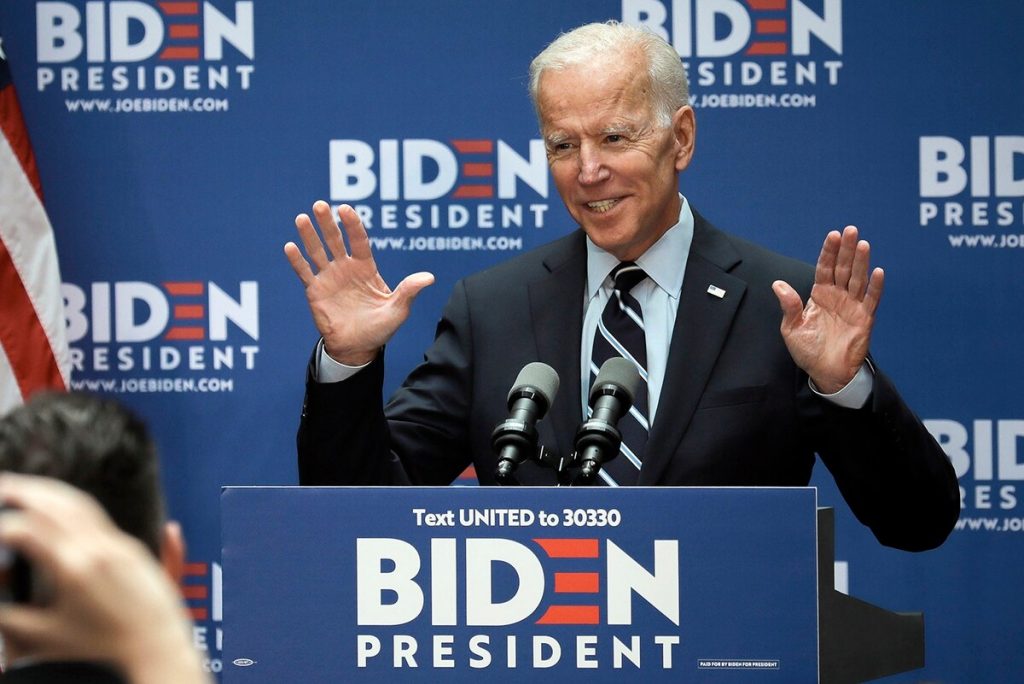
Democratic presidential candidate former Vice President Joe Biden speaks about foreign policy at The Graduate Center at CUNY on July 11, 2019, in New York. (Bebeto Matthews/AP) (Image from Military Times)
Previous Democrat Administrations have been highly supportive of US Global strategic alliances and strategic bilateral relationships. There is no reason why this will change under a Biden-Harris team. No administration in the past has striven so much as President Trump to control these vast strategic global networks by Twitter or bombastic executive decisions which features in our nightly news coverage in Australia for example.
Maintaining such a vast global military alliance has indeed become a financial burden to an ailing US economy and future Republican administrations will undoubtedly require more cost sharing of these financial burdens with other countries like Australia in the US Global Military Alliance. In a pre-retirement speech, Republican President Eisenhower warned of the growing influence of the military industrial complexes through its effective lobbying on democratic public policy settings.
How far indeed is the current growth of the US Global Alliance too much?
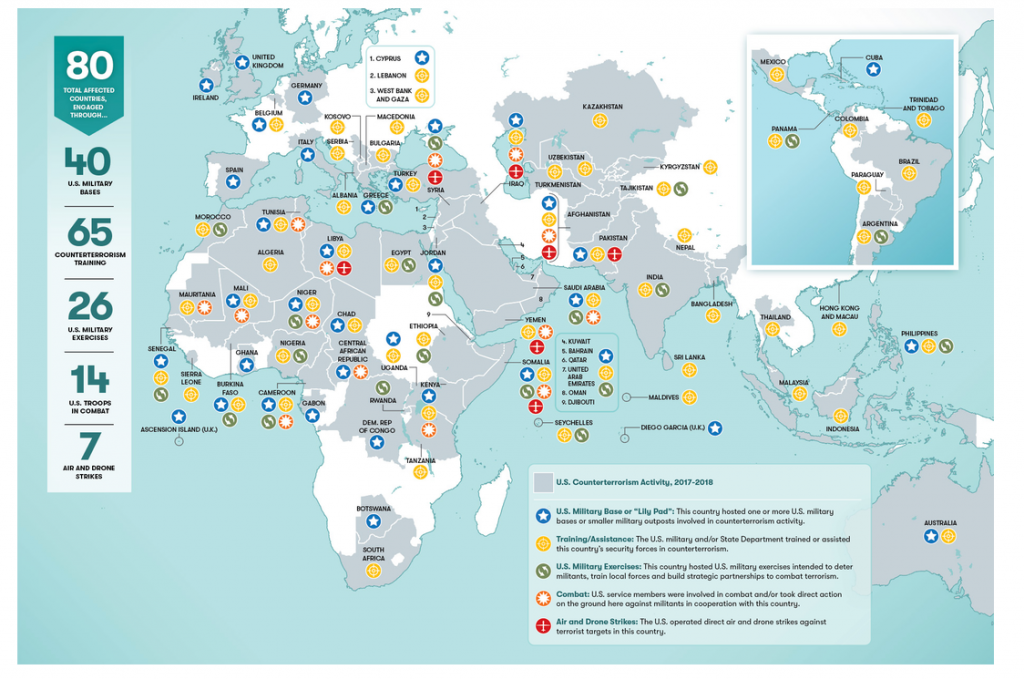
Image from the Smithsonian Institute
A Republican Administration will want to extend the outreach of the Global Military Alliance further through cost-sharing with other allied countries for new generation space warfare and anti-missile shields.
Should Australians Welcome the Biden-Harris Dream Team?
 Progressive opinion on both sides of the Pacific should welcome the Biden-Harris team as a way out of our multi-faceted problems facing developed countries like Australia in the immediate future.
Progressive opinion on both sides of the Pacific should welcome the Biden-Harris team as a way out of our multi-faceted problems facing developed countries like Australia in the immediate future.
Hopefully, Prime Minister Morrison will learn to stand up to pressures from our Allies to impose that insistence on the importance of corporate economics and strategic re-armament as the solutions to our current problems.
In 1951-2, Labor supported the formation of the ANZUS Alliance with the proviso that decision-making on strategic issues affecting Australia, New Zealand and the US should be consultative and democratic.
Thirty years later New Zealand ceased to be an ANZUS member. The Hawke Government with support from the Reagan Administration replaced three-way consultative meetings with the formation of the Australia United States Ministerial Consultations (AUSMIN).
With the old ANZUS Alliance now lapsed, what are the democratic protocols which guide Australia’s role on the US Global Military Alliance and its Associate Membership of NATO? Perhaps the Biden-Harris Team will explain just where we stand on this vital issue.
Also, there is that advice from US Ambassador which is alienating Australians from our most profitable trading and investment partner (US Embassy, Canberra, 6 July 2020).

Press Statement – 6 July 2020
“I join Secretary of Defense Esper and our National Security Council in commending our Australian friends and allies on the release of their 2020 Defence Strategic Update. In a rapidly evolving world, our unbreakable alliance is more important than ever. This important strategic document strengthens regional stability and helps secure our shared vision of a free and open Indo-Pacific. We applaud Australia’s robust and ongoing leadership in the region.”
– Ambassador A.B. Culvahouse Jr.
Perhaps the Biden-Harris Team will end this interference in our national sovereignty by adding some accountable protocols to AUSMIN in the future.
This is an opportunity for progressive opinion in Australia to ask for some more breathing space and national sovereignty as our profitable commercial trading ties with China continue to grow despite the current trading and investment dispute between the Trump Administration and China.
At this stage, Australia’s commercial trading partnerships with China continue to grow but there are warning signs in the latest proposed Chinese tariffs on Australian wine exports.
From far-off Britain, the Financial Times (FT) seems to be more in tune with the economic threats to Australia from US interference in our relationships with China in pursuit of the current agendas of the Trump Administration (4 August 2020).
The new Democrat Dream Team offers some more Post-COVID 19 Sunshine through a return to normalcy in both economic and strategic policies which give allied countries opportunities for enhanced national sovereignty and freedom to set our optimal rates of defence spending.
Let’s have your comments through the Replies Options available on AIM Network on these vital issues in the best traditions of Citizens’ Journalism. Readers have nothing to lose but their dependence on flamboyant Twitters and interview clips from the White House.
 Denis Bright (pictured) is a financial member of the Media, Entertainment and Arts Alliance (MEAA). Denis is committed to consensus-building in these difficult times. Your feedback from readers advances the cause of citizens’ journalism. Full names are not required when making comments. However, a valid email must be submitted if you decide to hit the Replies Button.
Denis Bright (pictured) is a financial member of the Media, Entertainment and Arts Alliance (MEAA). Denis is committed to consensus-building in these difficult times. Your feedback from readers advances the cause of citizens’ journalism. Full names are not required when making comments. However, a valid email must be submitted if you decide to hit the Replies Button.
Like what we do at The AIMN?
You’ll like it even more knowing that your donation will help us to keep up the good fight.
Chuck in a few bucks and see just how far it goes!
Your contribution to help with the running costs of this site will be gratefully accepted.
You can donate through PayPal or credit card via the button below, or donate via bank transfer: BSB: 062500; A/c no: 10495969

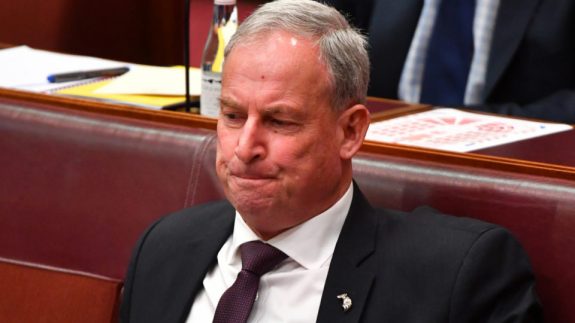










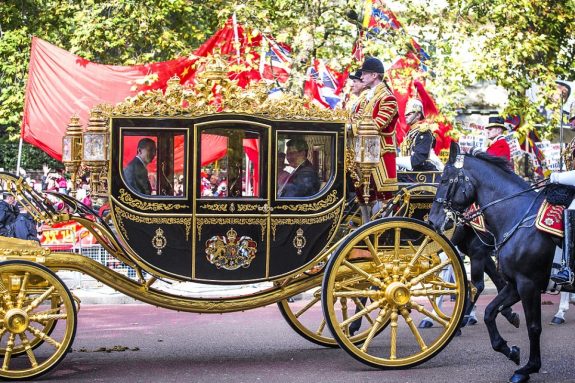




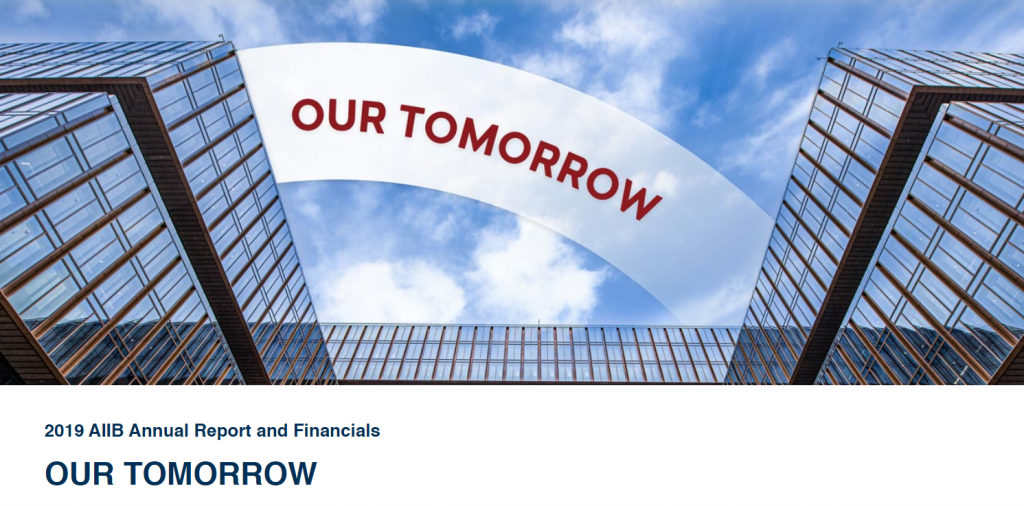





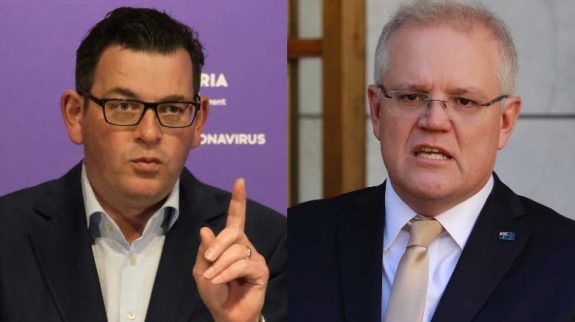

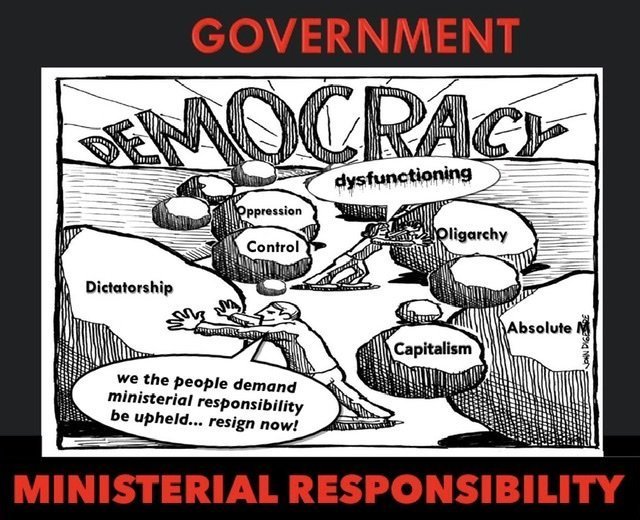

 Leonie Saunders is benevolent dictator of Connecting the Dots, proud lefty feminist. Adores children and animals. Despises greedy union-bashing, power-abusing corporate polluters.
Leonie Saunders is benevolent dictator of Connecting the Dots, proud lefty feminist. Adores children and animals. Despises greedy union-bashing, power-abusing corporate polluters.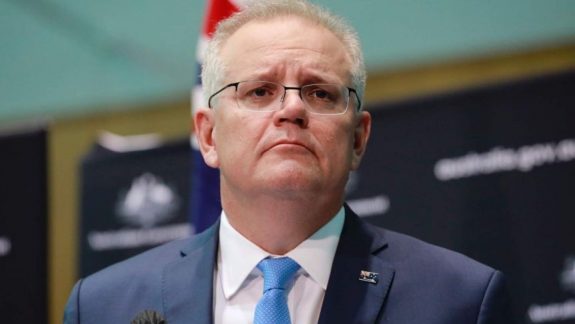
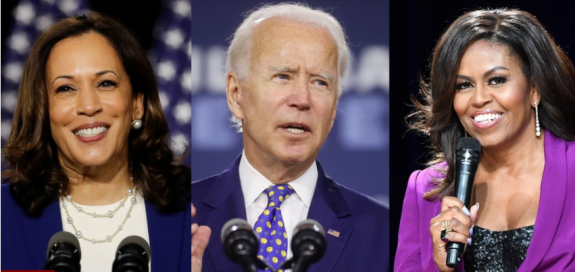
















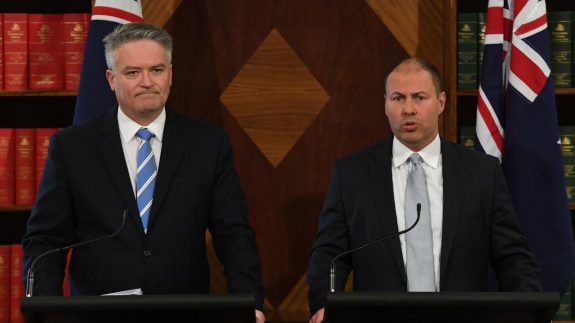

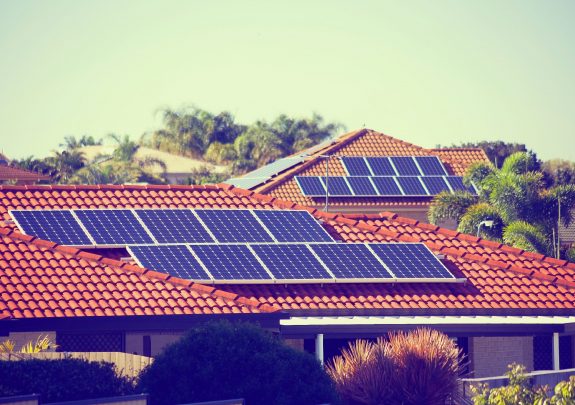
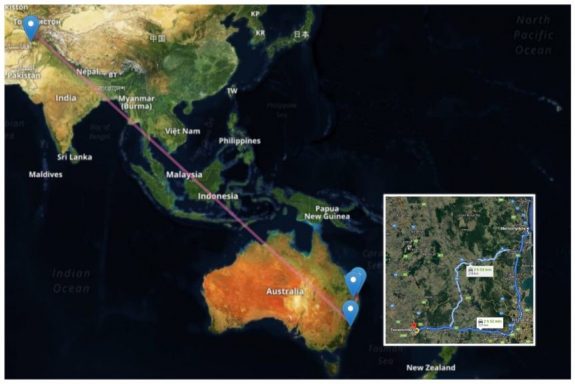








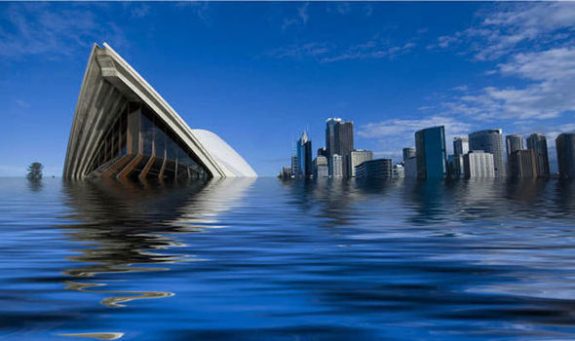
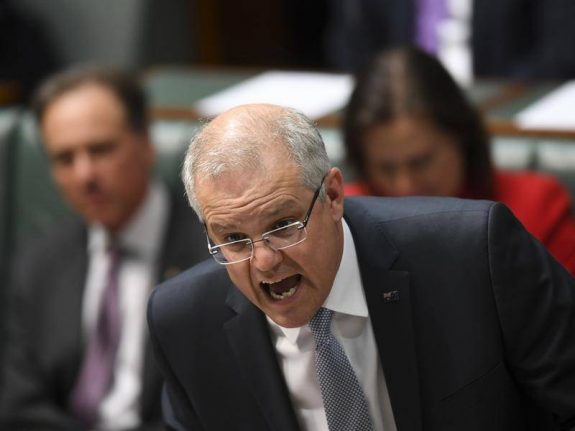
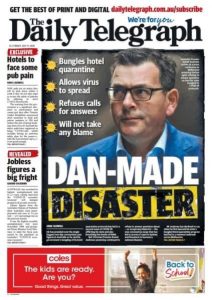
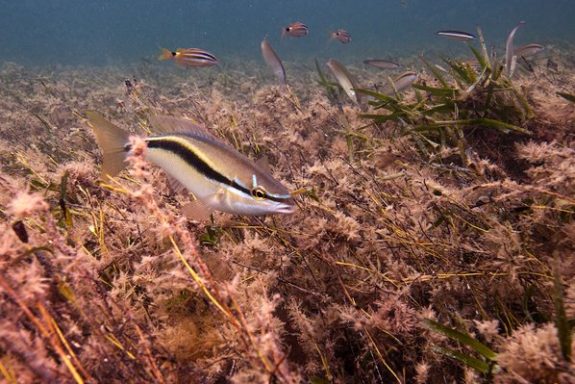
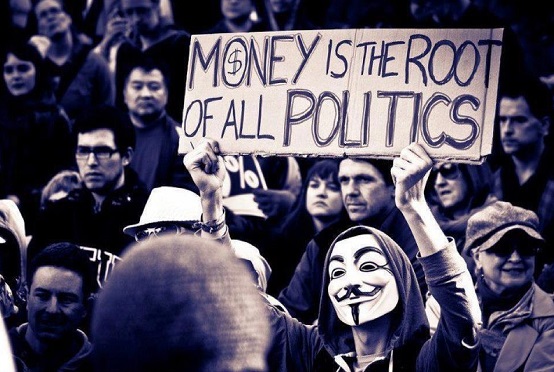
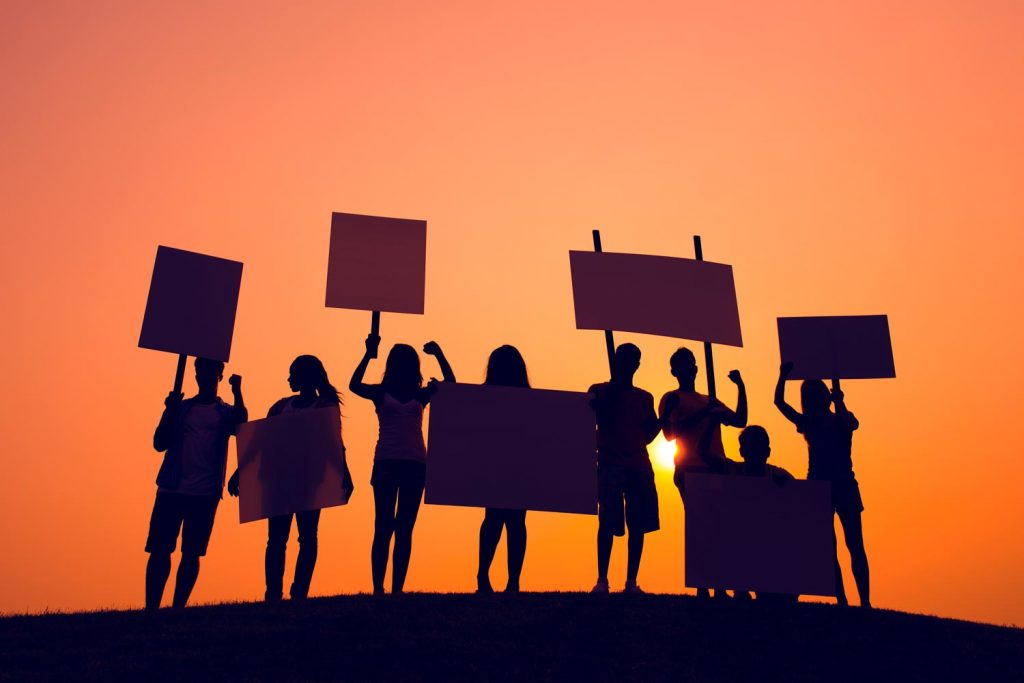
 Robert Wood’s writing has been published in numerous literary and academic journals. He has interned for
Robert Wood’s writing has been published in numerous literary and academic journals. He has interned for